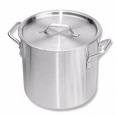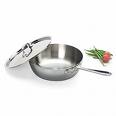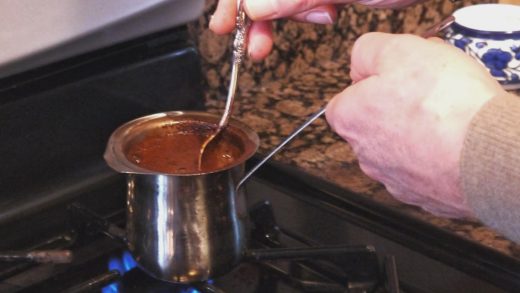Versatility is important in selecting pots and saucepans. What’s the difference? Believe it not, the type of handle. A pan will have a single long handle you grip like a lever. A pot usually has smaller handles on either side. Both types can, and should, have lids.
Stockpots
Most people find a stockpot of about the 8-quart size is most useful for the home kitchen, although I’ve easily gotten by without one. Most stainless steel stockpots come as a set that includes a lid, a steamer basket and a larger strainer basket usually used for boiling large pasta or vegetables. These can be very useful, especially if you like steamed vegetables or dumplings or if you like to make a lot of soups. A pot of this size also is best for all kinds of pasta, which needs at least about a gallon of water to cook properly.
Personally, I find these extras can just get in the way, as you have to find a place to put them if you’re using the pot but not the baskets. And counter space is a problem in the small bachelor kitchen. But most cooks swear by their stockpots and it is a useful tool.
Saucepans
However, if I had a real shortage of funds to spend on kitchen equipment, I would settle for a large saucepan or saucier (pronounced saw-see-ay). The only real difference here is that the saucier has curved, bowl-like sides that make it very whisk-friendly, while the saucepan has straight sides like a conventional pot.
Why do I like the saucepan? Because I think for the size it has greater versatility than the stockpot. A large pan, about 4 quarts, can be used for one or two servings of pasta and most side dishes. A cheap collapsible steamer basket can fit inside for steaming vegetables and other things.
I think you should also have one other size saucepan. I find a one-to 1-1/2 quart saucepan to be very useful for heating up small amounts or making sauces. The small size keeps the heat more concentrated and takes up less valuable space.




